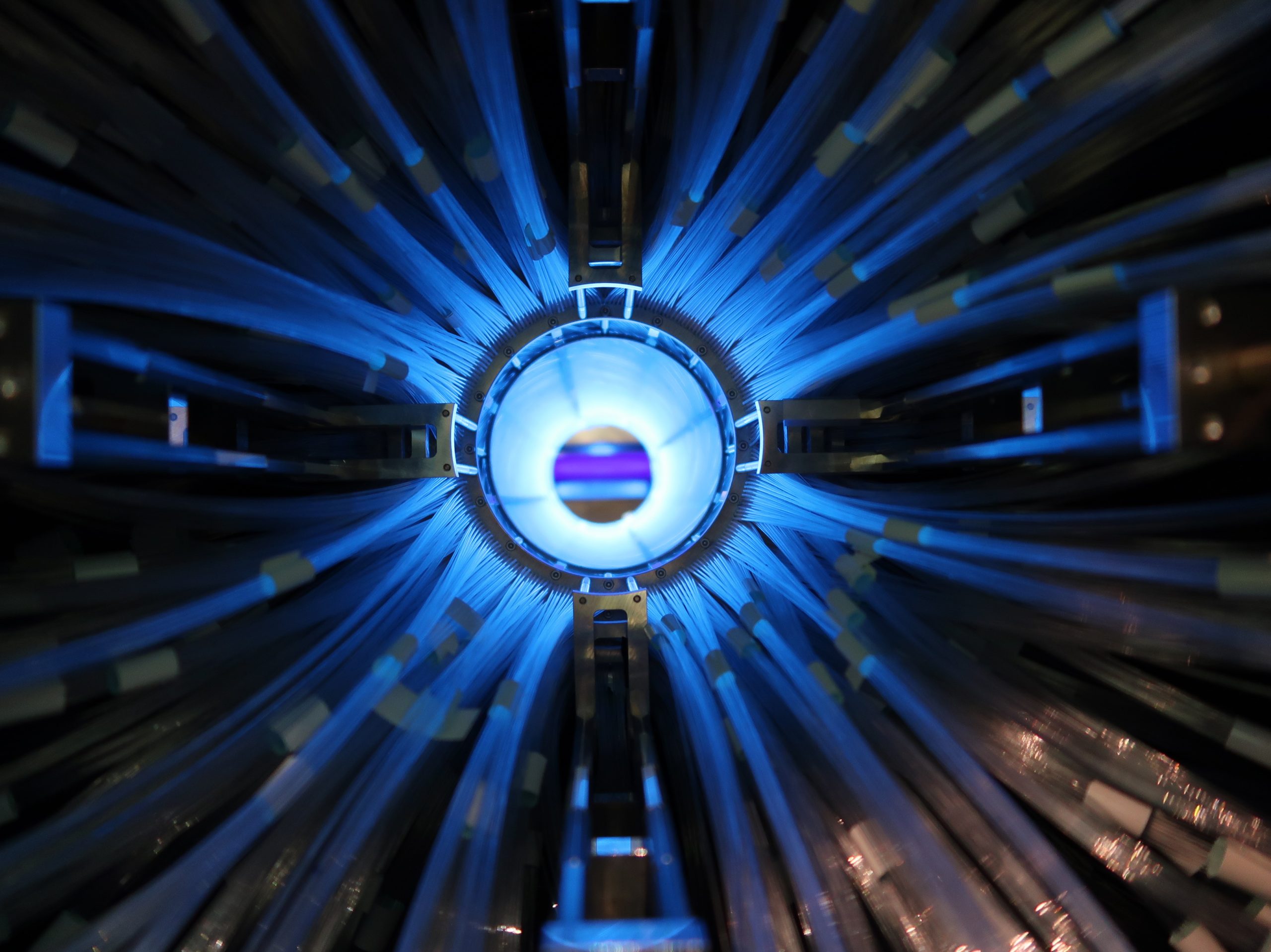- Press Release
A Report on the Ground at KEK: Electrons and Positrons Collide for the first time in the SuperKEKB Accelerator
April 26th, 2018
-
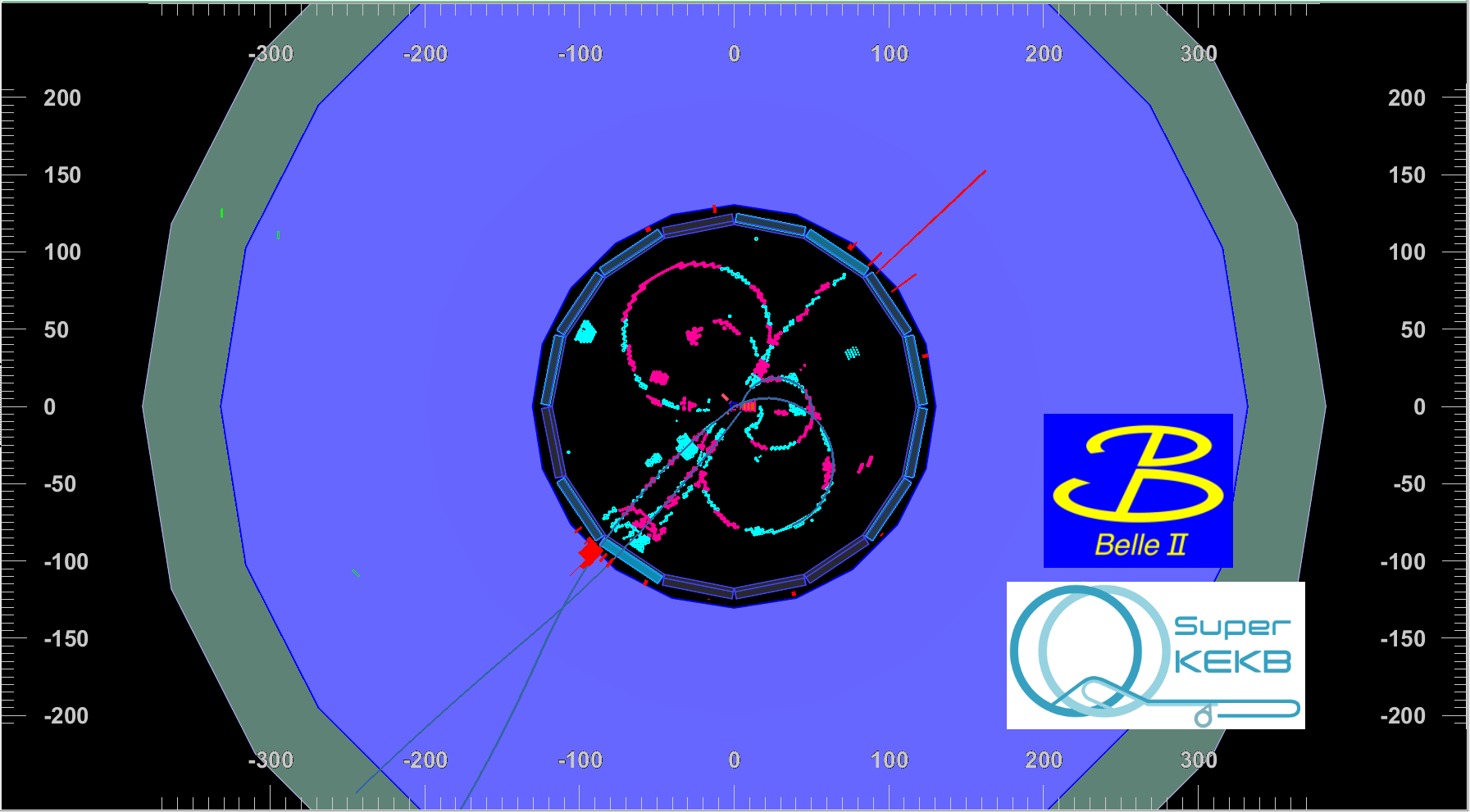
A hadronic event recorded at 0:38am April 26, with which Belle II group confirmed the First Collisions at SuperKEKB/©️ KEK IPNS
At 0:38am (GMT+09:00), April 26, 2018, several hours after KEK accelerator team found the collision point of electrons and positrons accelerated and stored by the SuperKEKB accelerator, one hadronic event produced by electron-positron annihilation (matter-antimatter annihilation), was reconstructed and displayed on a screen by the Belle II detector at the Tsukuba campus of KEK in Japan.
People involved in this project said cheerfully, “It is the result of our great efforts to overcome difficulties”, “I am so relieved to see the first collisions that we have long been waiting for”, “This is the real start of Belle II experiment.” They managed to make first tuning of the nano-beam scheme, overcome many difficulties and finally reached the first collisions.
Compared to Belle, the detector for the previous experiment that verified the Kobayashi-Maskawa theory of CP violation, Belle II has dramatically improved capabilities and can detect and reconstruct events at much higher rates provided by the 40 times higher luminosity of SuperKEKB. A dataset of about 50 billion pair production events of B anti-B meson, D anti-D meson, τ+・τ− and so on, which is 50 times larger than the entire data sample of the KEKB/Belle project, will be accumulated in about 10 years of operation.
After Phase I commissioning of SuperKEKB electron-positron collider in 2016, KEK finished constructing a positron damping ring and a new extremely complex system of superconducting final focusing magnets, then rolled the Belle II detector to the interaction point. On March 19, 2018 KEK began Phase II commissioning, a new stage in the operation of SuperKEKB. A beam of electrons was successfully stored in the main high energy ring on March 21st. A beam of positrons was also successfully stored in the main low energy ring on March 31st. Since then, final accelerator tuning of the two beams for collisions at the center of Belle II continued for 25 days and nights.
-
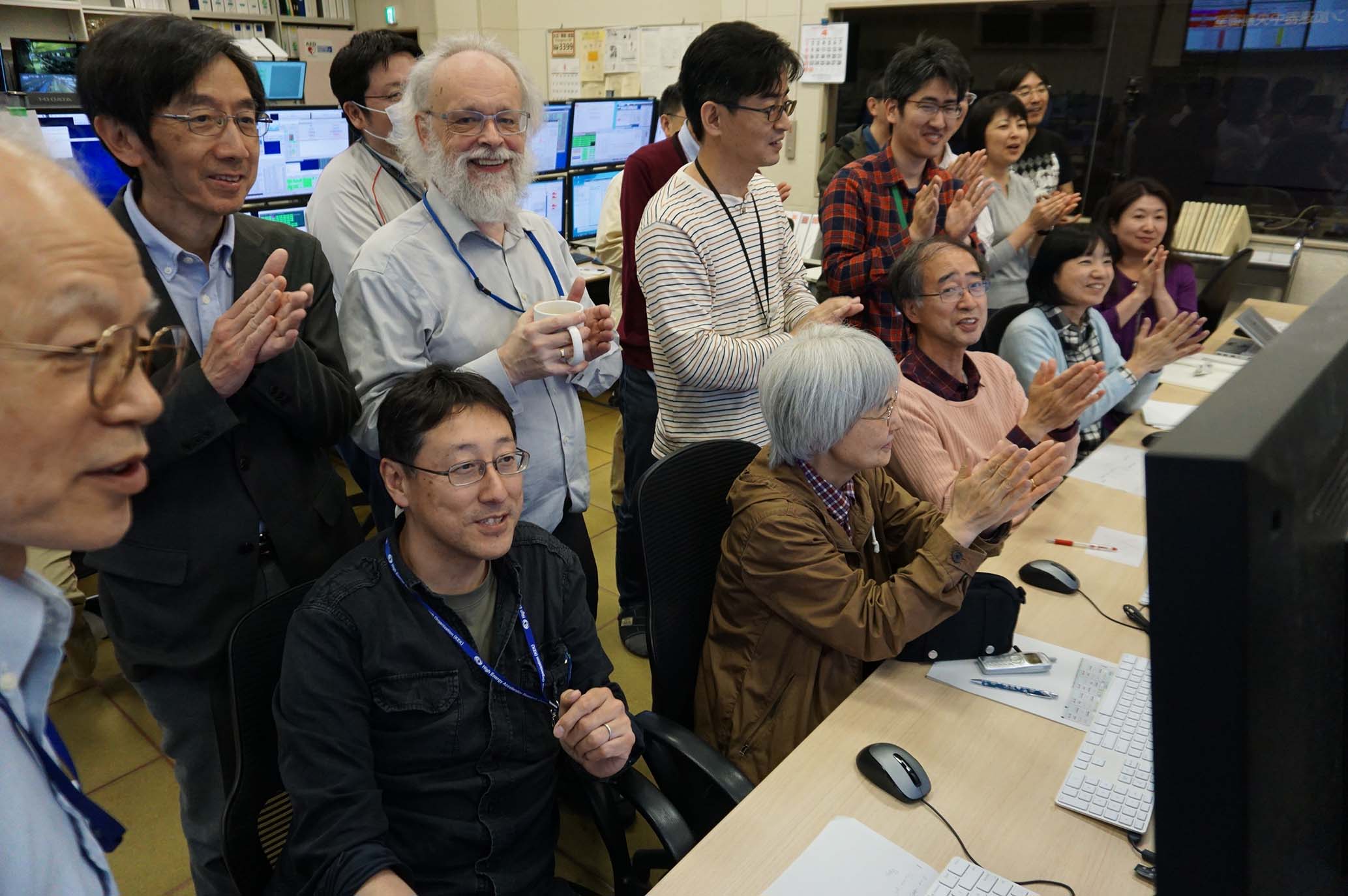
Cheers erupted in the SuperKEKB accelerator control room when they found the collision point at 8:15pm on the 25th of April
Accelerator tuning of SuperKEKB entered the final stretch on the night of April 25th. When the last vertical tuning of the beams for collision finished successfully at 8:15, around 30 researchers and engineers involved in the tuning erupted into cheers at the SuperKEKB accelerator control room. Soon after they confirmed the stability of beam, they handed over the baton to the Belle II team. The Belle II team began to raise the high voltage on its detectors to observe particle reactions. The physics run started at 10:10pm.
-
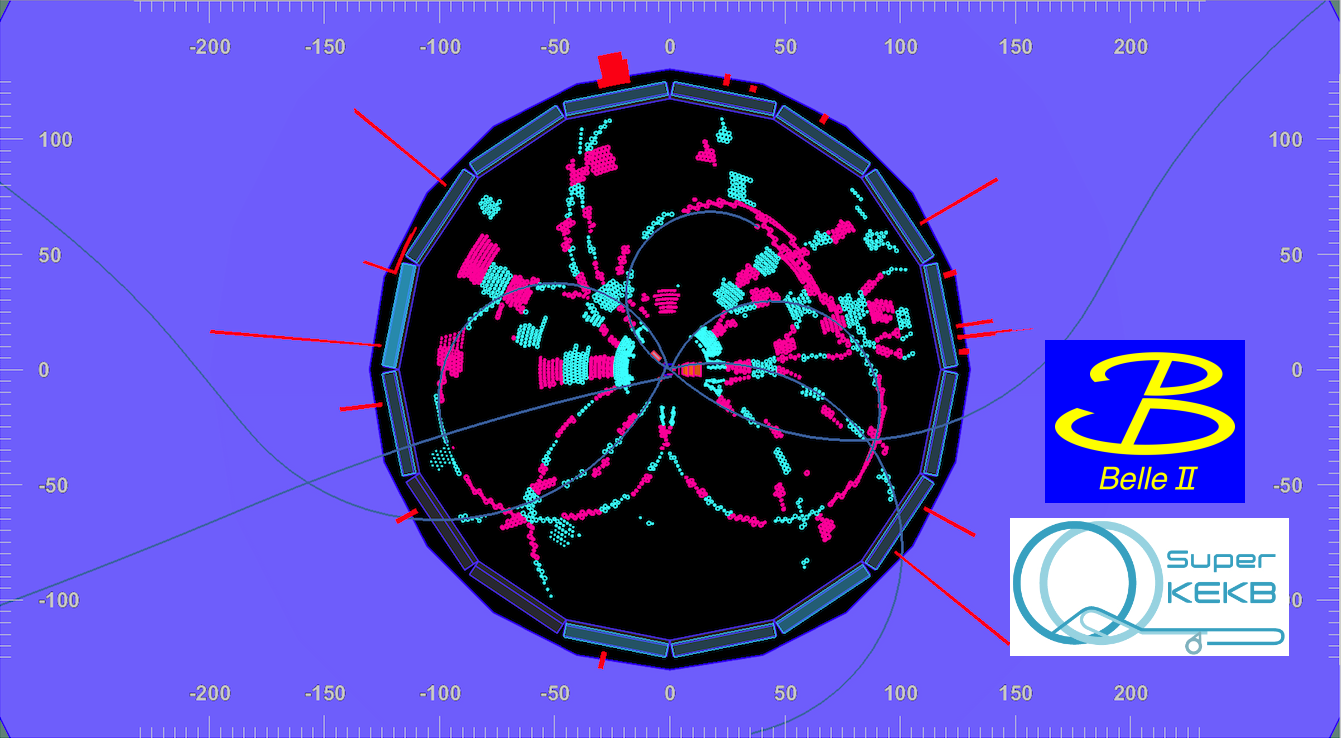
A hadronic event found at 2:27am
-
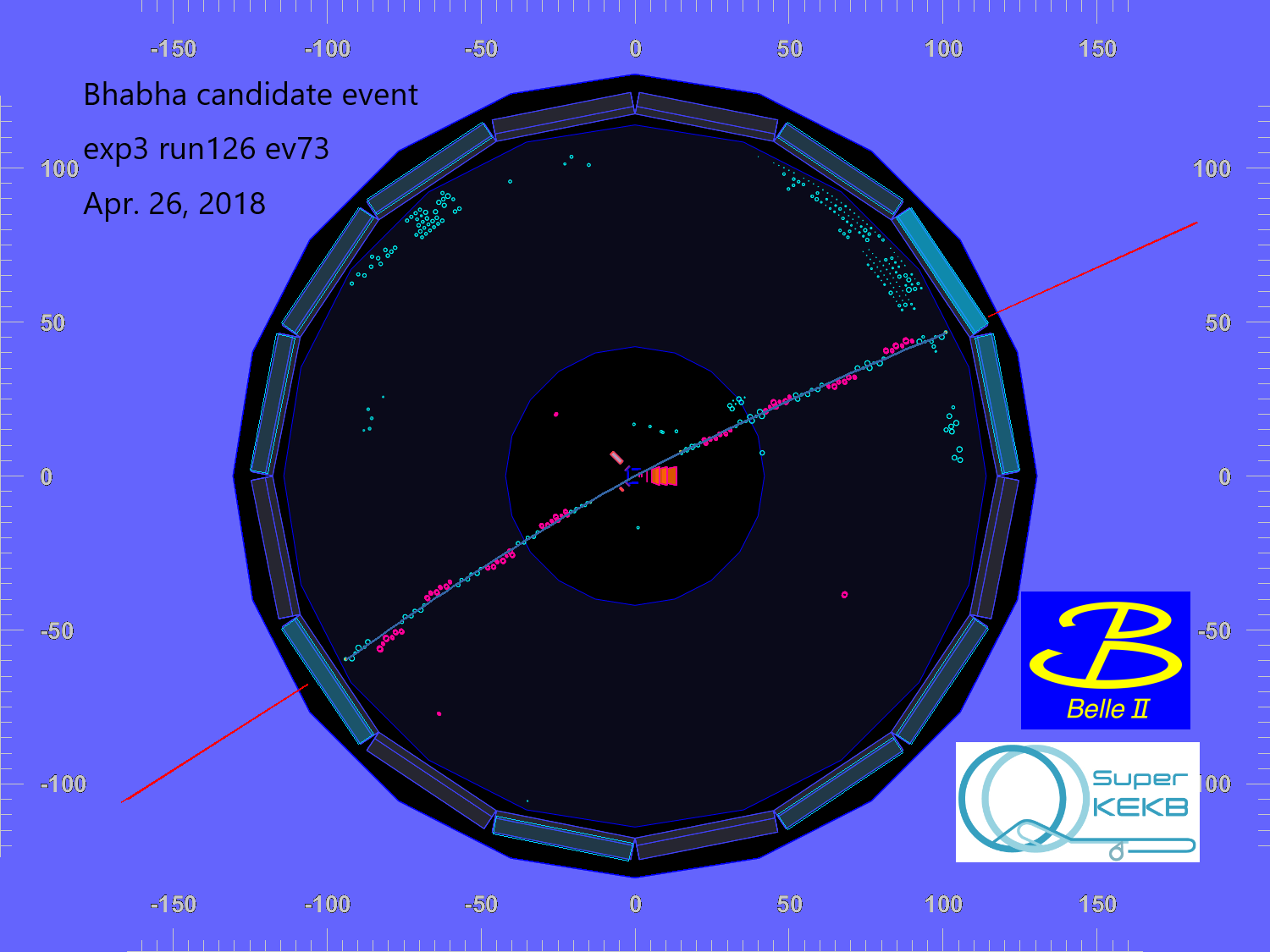
A Bhabha event detected at 0:48am
In the beginning, the first collisions could not be observed on the Event Display which reconstruct reactions at the core of Belle II, because of large backgrounds from other processes such as beam gas and cosmic ray induced events. However, at 0:38 on April 26th, after two hours and a half, many particle tracks originating from the interaction point were observed. The Belle II group checked that this was a hadronic event. Some Bhabha events, the electron-positron scattering process, were also observed before and after the first event. During the physics run, which lasted until 8:30am in the morning, about 10 events, likely including beauty quark and anti-beauty quark pairs, were found.
During the physics run, the scene from the Belle II control room was broadcasted on the internet Niconico Live Channel; many people watched, cheered and gave supportive comments on the rolling screen.
-
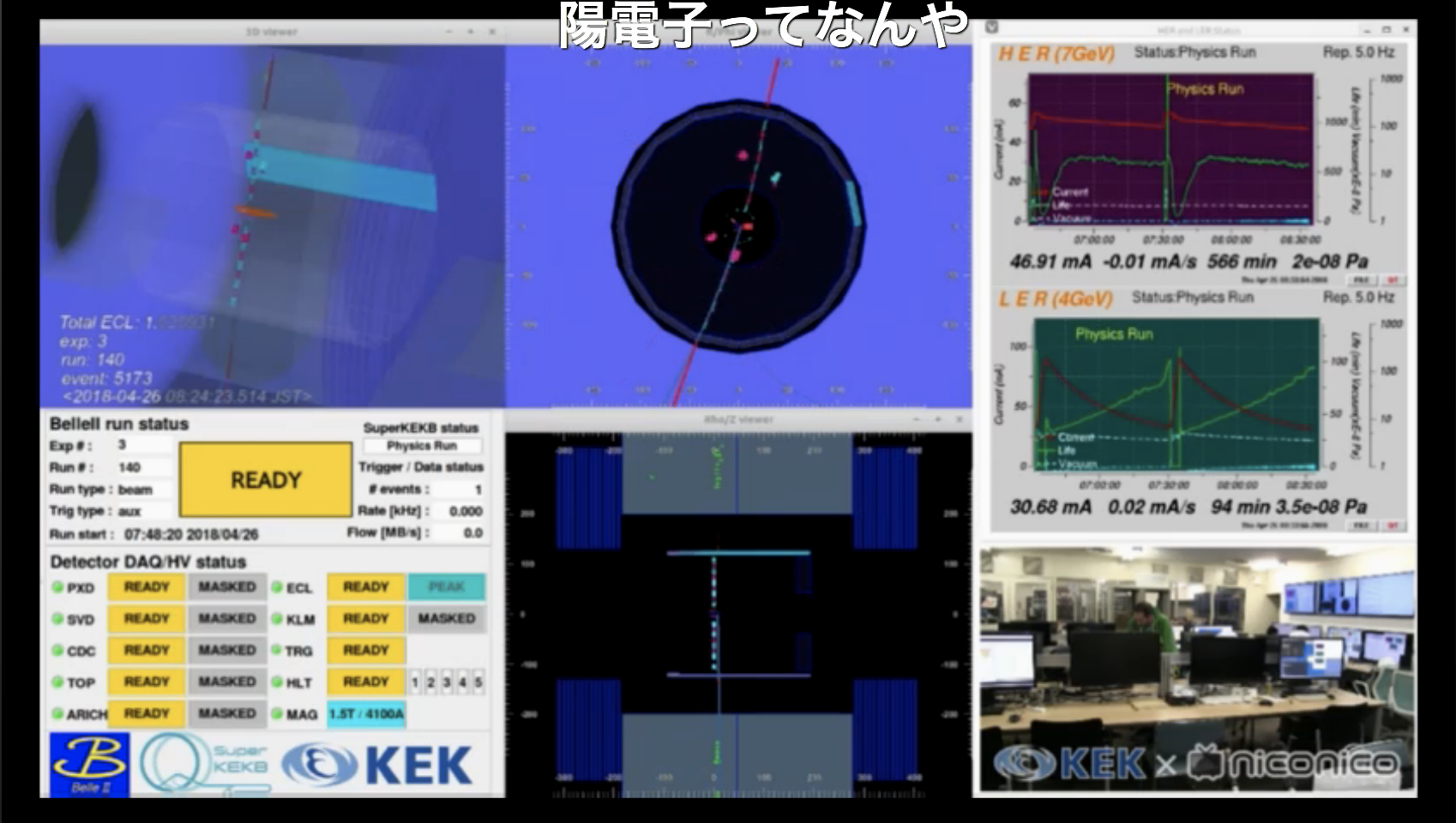
A display image of Niconico Live Channel
-
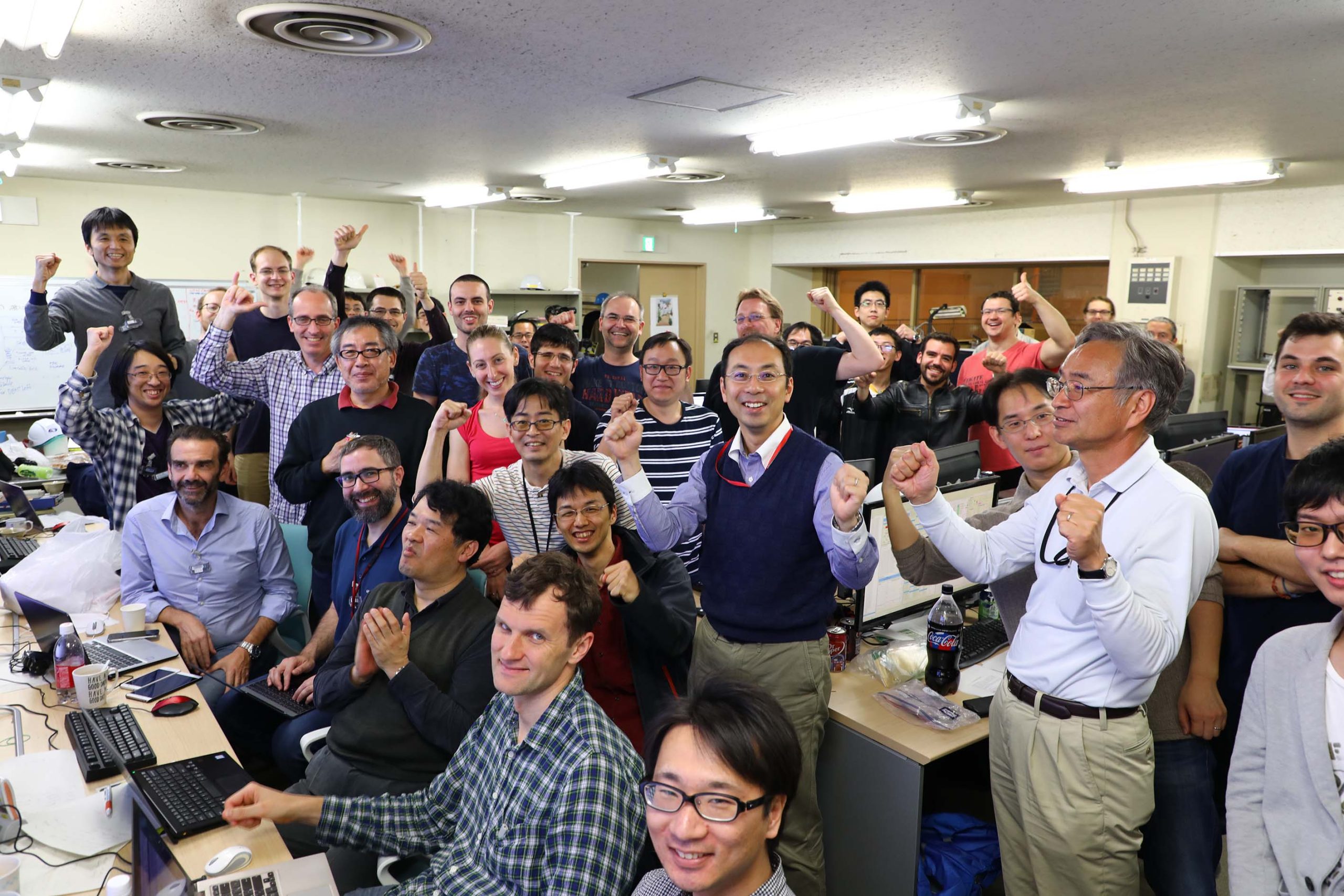
Cheers and applause erupted from the researchers in the Belle II control room on the B3 floor of the Tsukuba Experimental Hall
-
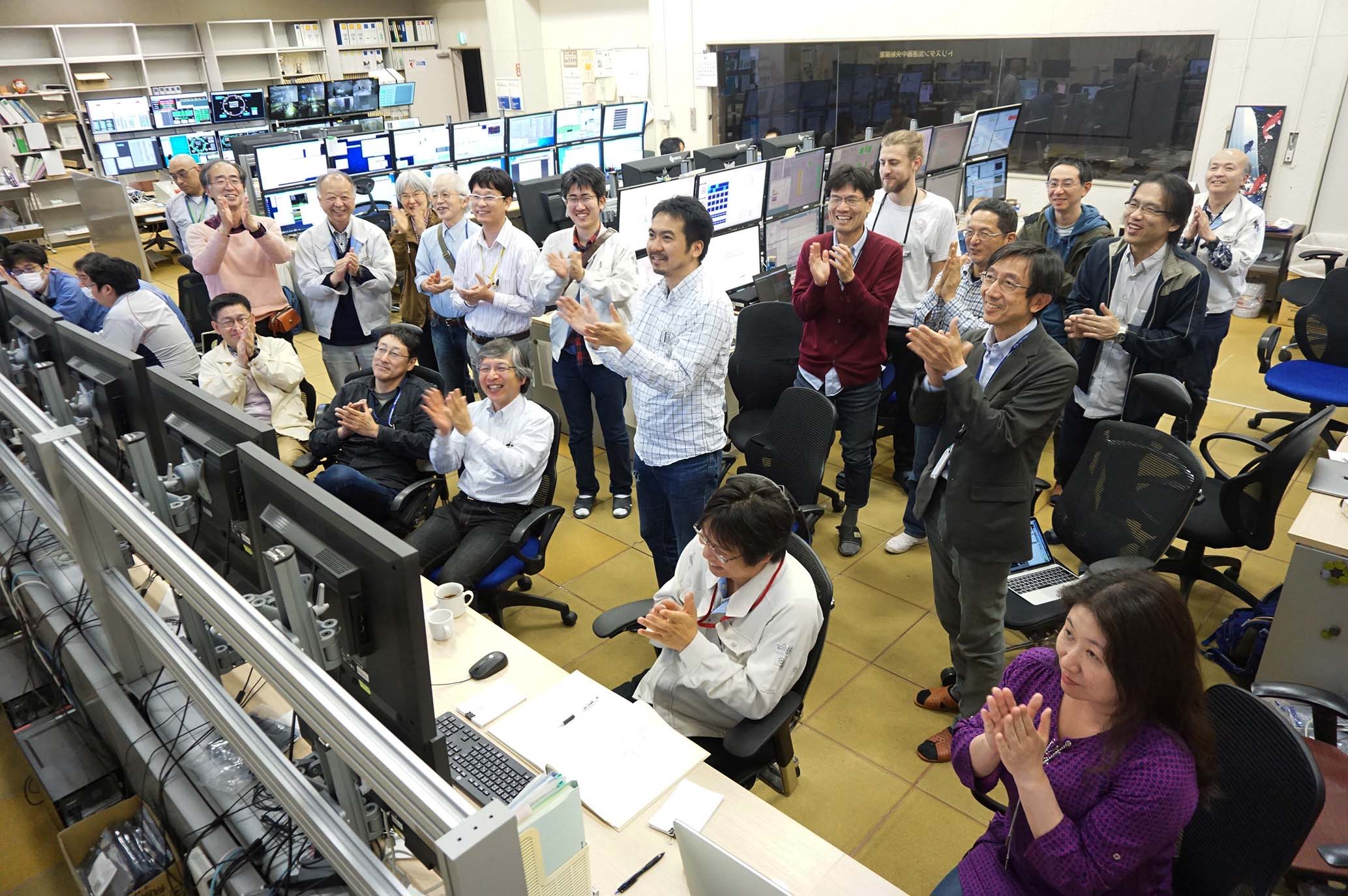
Researchers applauding the first hadronic event in the SuprerKEKB accelerator control room
The Belle II detector at SuperKEKB was designed and built by an international collaboration of over 750 researchers from 25 countries and regions. KEK will continue Phase II commissioning until July. The collaboration will tune the detector and physics data acquisition. The Belle II group is then planning to modify the inner detector from the prototype: BEAST to the VXD (Vertex Detector) before starting Phase III (real physics run) from February 2019.
Here is the press release.
Link
-
April 26th, 2018
KEK|Electrons and Positrons Collide for the first time in the SuperKEKB Accelerator
-
March 22nd, 2018
KEK|SuperKEKB accelerator kicks into new gear
-
BelleⅡ Experiment Website
-
KEK Official Website/ Research at B-Factory
-
Belle Experiment Website
-
KEK Channel on Youtube|A Search for New Physics - The Belle II Experiment
Related Links
-
Feb 23rd, 2018
Israeli Ambassador to Japan Visits KEK Tsukuba Campus for Flag Raising Ceremony Commemorating Israel’s Participation as 25th Member Nation of Belle II Experiment
-
Jan 26th, 2018
【Belle II Experiment】QCS Superconducting Magnets for Final Focusing of e-, e+ Beams Connected to Central Beam Pipes inside Belle II, Remote Vacuum Connection (RVC) Works Successfully.
-
Nov 18th, 2017
【Belle II Experiment】Preparation for Commissioning in Full Swing after Successful BEAST Detector Installation
-
November 20th, 2017
DESY|Das Biest ist drin—Wissenschaftler installieren Test-Detektor im Belle II-Experiment (in German)
-
November 20th, 2017
WELT MASCHINE|In Belle sitzt jetzt ein BEAST (in German)
-
Nov 10th, 2017
【BelleⅡ】The Test of the BEAST Detector System Started
-
Sep 1st, 2017
【特集】高ルミノシティ加速器/測定器で新しい物理法則を探す〜Belle、BelleⅡグループの取り組み

